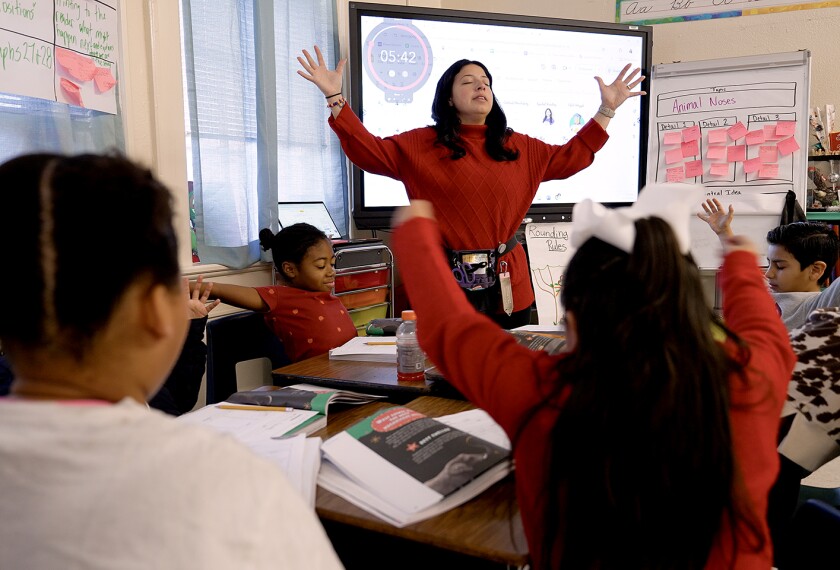While the word “trauma” has become something of a colloquial term, the chronic stress associated with severe and ongoing health and education problems is not related to low-level stressors such as watching a scary movie or getting in a fight with your best friend. As school districts explore trauma-informed practices or work to develop trauma-sensitive schools, a new understanding of trauma is emerging.
What do we mean when we say trauma and traumatic stress?
The National Institute of Mental Health defines two basic kinds of trauma.
The first comes from a single incident, often a disaster such as a hurricane or a school shooting. These affect many students or a whole community and often involve broad community responses.
The second type—and common but often much harder for school staff to spot—is complex trauma, such as chronic neglect, housing or food instability, or physical or sexual abuse.
Complex trauma can lead to so-called “toxic stress,” defined as a response to “severe, prolonged, or repetitive adversity with a lack of the necessary nurturance or support of a caregiver to prevent an abnormal stress response.”
Not all students who experience a traumatic event develop a toxic response; studies have found those with a strong support structure tend to be resilient.
Are “Adverse Childhood Experiences” the same as trauma?
One of the most popular concepts for understanding and gauging trauma is the adverse childhood experiences, or ACEs, framework, which uses a set of common examples of abuse, neglect, and family problems that are associated with long-term problems in health, education, and social relationships.
ACEs were coined in a study by the federal Centers for Disease Control and Prevention and the health provider Kaiser Permanente. Researchers initially interviewed more than 217,000 adults about whether they had ever experienced the following situations: physical, sexual, or emotional abuse; physical or emotional neglect; having a parent or caregiver who died, was divorced, or incarcerated, had severe mental illness, or abused drugs or alcohol; or if they had ever been the victim of or witnessed violence in the home.
Traumatic experiences cluster, researchers found. Children whose families were dysfunctional or unstable were more likely to experience abuse or neglect, for example.
In an ongoing series of longitudinal studies, researchers found that the higher the number of ACEs a child experienced (particularly if there are four or more) the worse their outcomes in education, physical and mental health, and the tendency to engage in risky behaviors. Moreover, no individual type of ACE proved more damaging than another; chronic emotional abuse or living with a drug-addicted family member caused long-term brain changes in the same way as sexual abuse.
It’s important to note that the original ACEs study focused on adults, and researchers in the 20 years since the original 1998 study have tailored the types of childhood adversity included in these lists. The most recent federal survey of adverse childhood experiences, part of the National Survey of Children’s Health, also counts growing up under extreme financial instability, in which families often cannot afford basic food and housing.
What does toxic stress do?
Studies have found intense trauma and chronic toxic stress increase inflammation and weaken the immune system, impair memory and attention, and increase the risk of developmental delays. Neurologically, trauma has also been found to make children’s brains more “reactive"—quicker to stress, harder to soothe, and likelier to interpret and react to neutral situations as threatening. A 2016 study in the Journal of Applied School Psychology notes that “children who have experienced complex trauma may develop maladaptive coping mechanisms: anger outbursts, substance abuse, truancy, and other challenging behaviors. These behaviors may make students appear hostile and oppositional, belying their vulnerability.”
In the long run, those who experienced four or more ACEs were four to 12 times as likely to abuse drugs or alcohol, engage in risky sexual behavior, or commit suicide, compared with those who did not have traumatic experiences. A 2018 study of K-6 students also found each ACE increased a student’s risk of absenteeism, behavior problems, and performing below-grade level in reading, writing, and mathematics.
What does federal law say about trauma-informed schools?
The federal Every Student Succeeds Act encourages states and districts to incorporate “trauma-informed practices that are evidence-based.” Districts can use Title II money to train teachers in “the techniques and supports needed to help educators understand when and how to refer students affected by trauma, and children with, or at risk of, mental illness” as well as “training for all school personnel on how to prevent and recognize child sexual abuse.”
This is the first installment in a series of articles exploring how schools are learning to recognize and respond to students experiencing stress, whether their trauma stems from a sudden disaster or a long-term hardship like poverty or abuse. Read More.
The Individuals with Disabilities Education Act currently refers to trauma only for preschool-age children. Districts can identify children for early intervention services under IDEA for experiencing a “substantial case of trauma due to family violence.”
However, in several ongoing lawsuits, courts are exploring whether complex trauma may qualify as a disability that would require a student to be given an individualized education program, and separately, that districts may need to adjust a student’s IEP to address trauma the student experienced after first being identified under IDEA.




